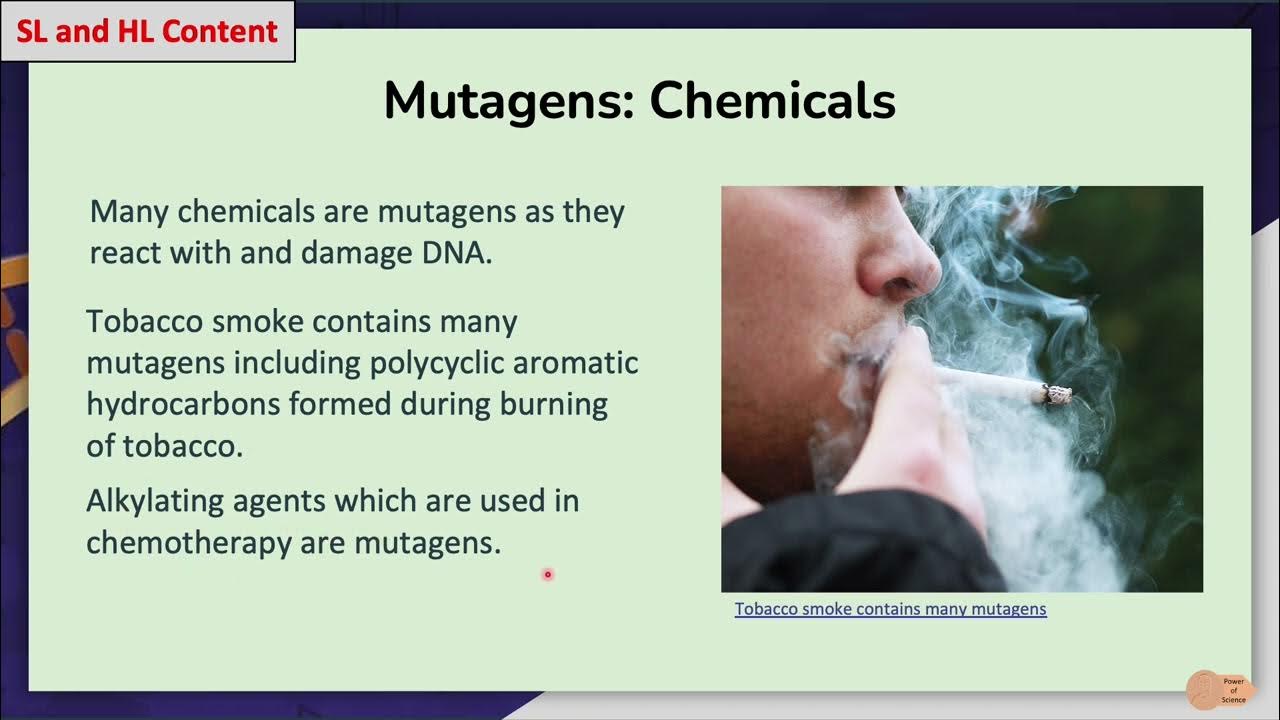Aula Biologia - Mutações Gênicas - Origens e Consequências para o Enem e Vestibulares - STOODI
Summary
TLDRThis biology class dives into the concept of mutations, explaining how changes in DNA can have both harmful and beneficial effects. It covers two types of mutations: gene mutations, which alter the structure of genes, and chromosomal mutations, which affect chromosome number or structure. The video also explores the origins of mutations, including spontaneous errors and those induced by external factors like radiation or viruses. The consequences of mutations are discussed in the context of somatic and germ cells, highlighting their role in disease and genetic variability, with implications for adaptation and evolution.
Takeaways
- 😀 Mutations are changes in genetic material that can be beneficial, harmful, or neutral.
- 😀 Gene mutations occur in specific genes and can lead to changes in the proteins they produce.
- 😀 Chromosomal mutations involve alterations in the number or structure of chromosomes, affecting larger genetic regions.
- 😀 Mutations can arise spontaneously due to errors during DNA replication or cell division.
- 😀 Induced mutations are caused by external factors like radiation, chemicals, or viruses.
- 😀 Silent mutations do not change the resulting protein, while missense and nonsense mutations can alter protein structure or stop its production.
- 😀 Chromosomal mutations, like trisomy in Down syndrome, can change the number of chromosomes, impacting an individual’s development.
- 😀 Mutations in somatic cells affect only the individual and are not passed on to descendants.
- 😀 Germ cell mutations can be passed on to offspring, contributing to genetic variability and potential evolutionary advantages.
- 😀 Mutations are a key factor in natural selection, potentially providing traits that improve adaptation and survival in a species.
- 😀 While mutations are often linked to negative outcomes like cancer, they can also introduce beneficial traits that promote species evolution.
Q & A
What is a mutation in genetic terms?
-A mutation is an alteration in the genetic material of an organism. It represents a change in the DNA structure, which can occur naturally or due to external factors.
What are the two main types of mutations discussed in the transcript?
-The two main types of mutations are gene mutations, which involve changes in the structure of a gene, and chromosomal mutations, which affect the number or structure of chromosomes.
What is the difference between a gene mutation and a chromosomal mutation?
-A gene mutation affects the structure of a single gene, which can alter the protein it codes for, while a chromosomal mutation involves changes in the number or structure of entire chromosomes, potentially affecting many genes.
Can mutations have positive effects on organisms? If so, how?
-Yes, mutations can have positive effects, as they may bring about beneficial changes that help an organism adapt to its environment. These beneficial mutations can lead to improved survival or reproductive success.
What is the concept of 'silent mutation'?
-A silent mutation is a change in the DNA that does not affect the protein structure. Although it alters the gene and RNA, it does not alter the resulting protein and thus does not affect the organism's phenotype.
What are some consequences of chromosomal mutations?
-Chromosomal mutations can lead to a variety of disorders, such as Down syndrome, where there is an extra chromosome in a pair, resulting in trisomy. These mutations can also involve changes in chromosome structure, like gene deletions or insertions.
What are the origins of mutations, and how do they differ?
-Mutations can originate spontaneously or be induced. Spontaneous mutations occur by chance, often during DNA replication or cell division, while induced mutations are caused by external factors like chemical substances, radiation, or viruses.
How can viruses induce mutations in a cell's DNA?
-Viruses can induce mutations by incorporating their own genetic material into a host cell's DNA. This process can either add new genes to the cell's DNA or take genetic material from the host, altering the cell's genetic structure and potentially leading to mutations.
What is the difference between somatic cell mutations and germ cell mutations?
-Somatic cell mutations occur in the body’s non-reproductive cells and are not passed on to offspring. Germ cell mutations, on the other hand, occur in the cells that will form gametes (sperm and eggs), and can be passed down to future generations.
What are the potential consequences of mutations in germ cells?
-Mutations in germ cells can lead to the transmission of altered genetic material to offspring, resulting in genetic variability. This variability can contribute to the evolution of a species, with both positive or negative effects depending on the nature of the mutation.
Outlines

This section is available to paid users only. Please upgrade to access this part.
Upgrade NowMindmap

This section is available to paid users only. Please upgrade to access this part.
Upgrade NowKeywords

This section is available to paid users only. Please upgrade to access this part.
Upgrade NowHighlights

This section is available to paid users only. Please upgrade to access this part.
Upgrade NowTranscripts

This section is available to paid users only. Please upgrade to access this part.
Upgrade Now5.0 / 5 (0 votes)





